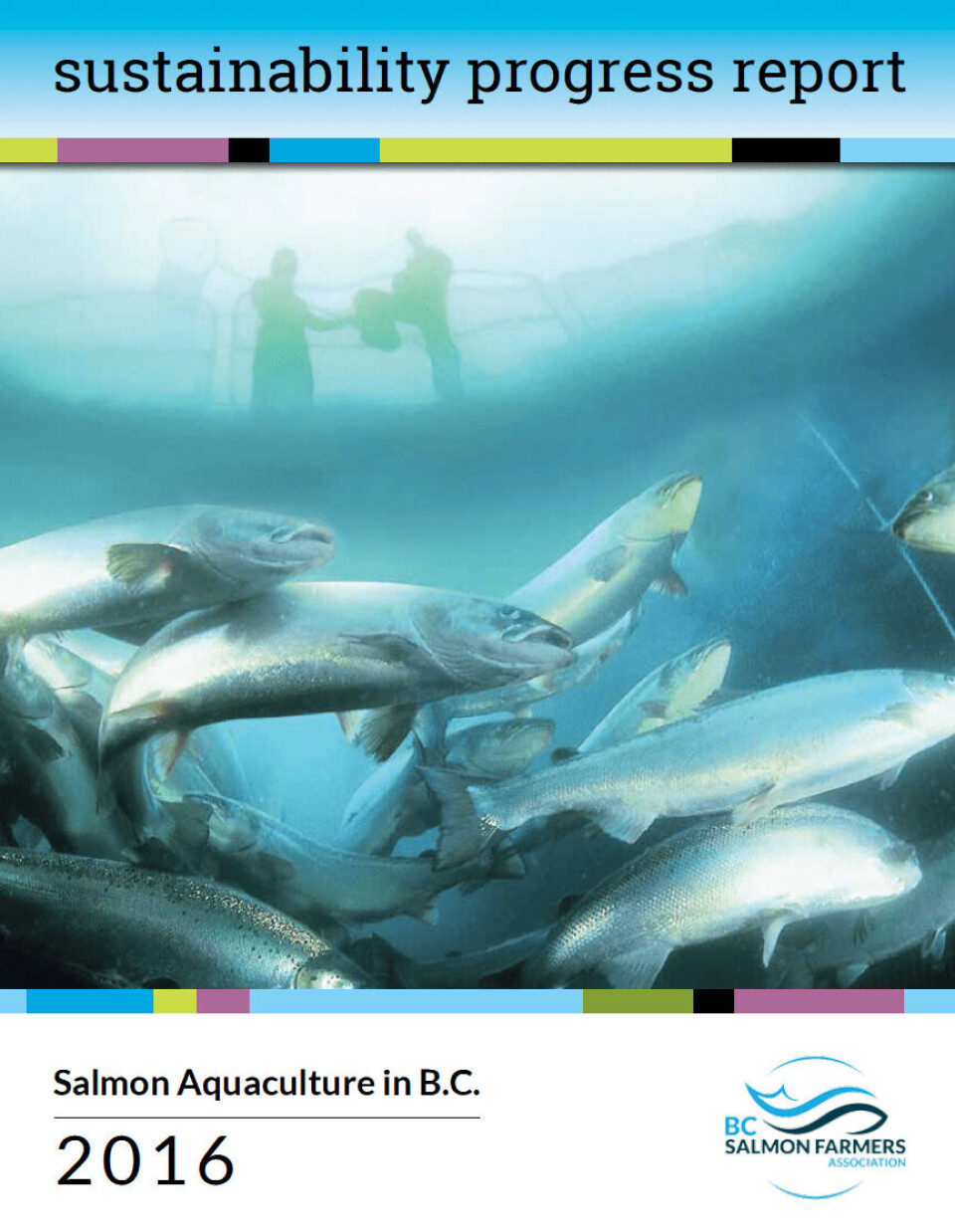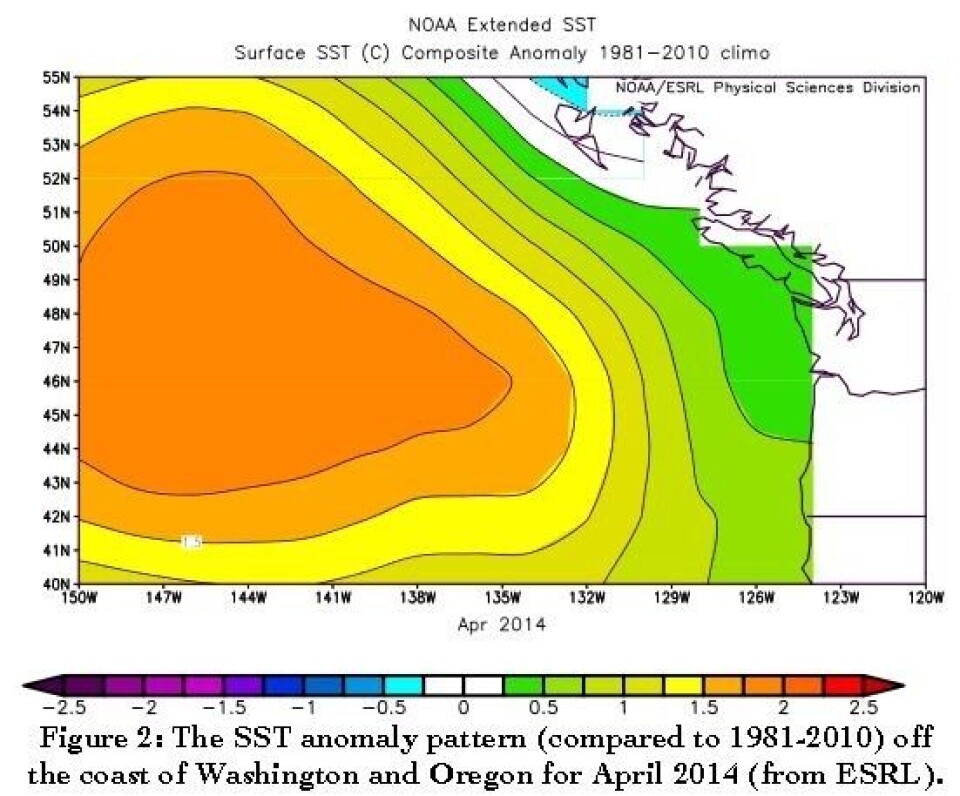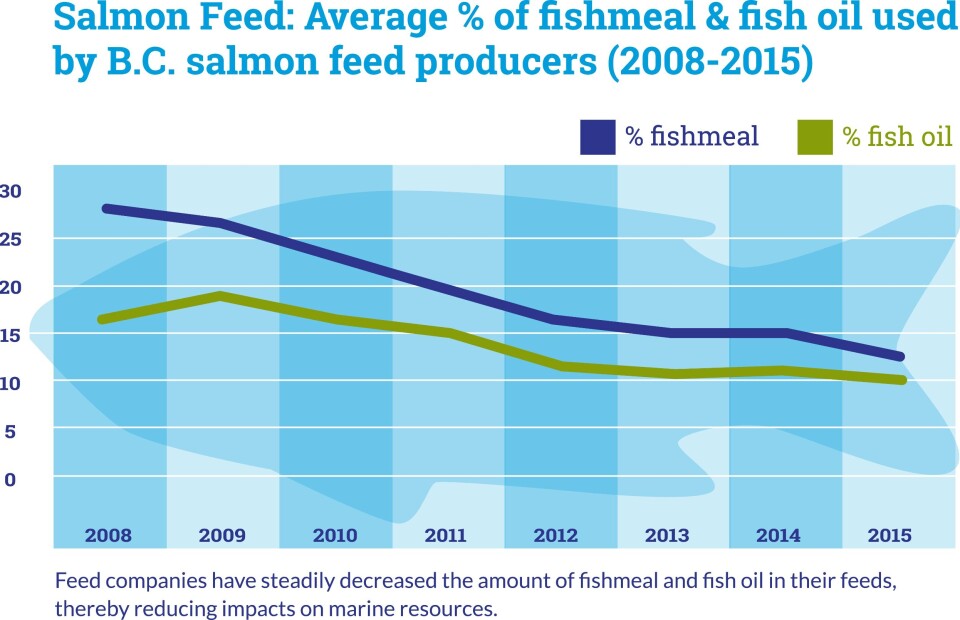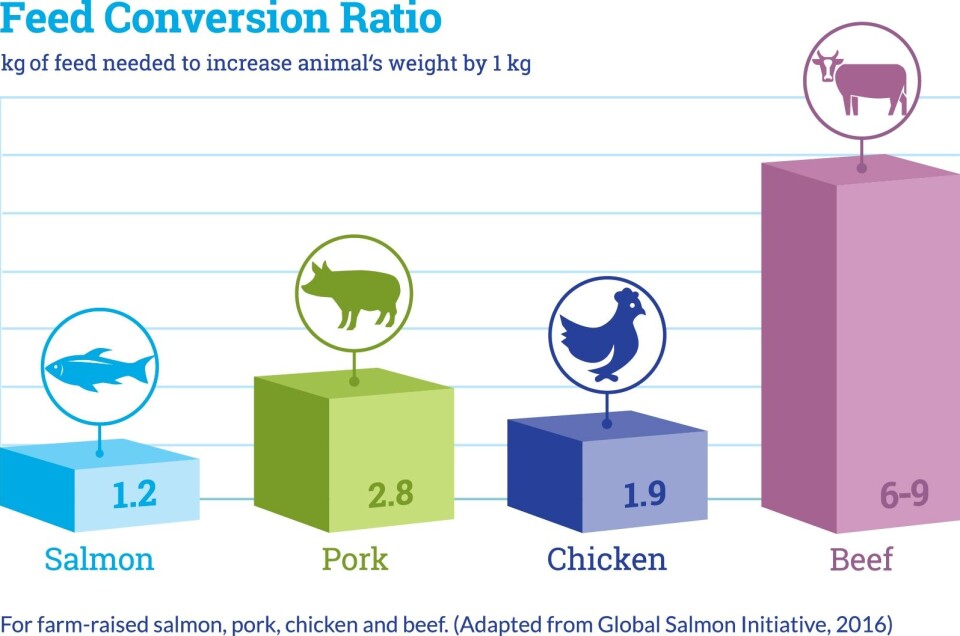
Battling The Blob
BC farmers were forced to adapt to extreme ocean conditions last year, caused in part by the movement of 'The Blob' towards the Pacific coast, according to a report released today.
The BC Salmon Farmers Association (BCSFA) 2016 Sustainability Progress Report today (available at www.bcsalmonfarmers.com) details how he coast of BC experienced one of the hottest summers on record last year after 'The Blob’ – a mass of unusually warm water that had been situated off the coast of North America for almost 2 years - migrated to the BC coast in January 2015.
“Ocean conditions were extremely poor in 2015,” said Jeremy Dunn, Executive Director of the BCSFA. “The blob had a real impact on temperature, weather, salinity… But our farmers are resilient and adapted to it.”

Increased ocean temperatures had a positive effect on salmon growth rates, but also meant higher growth rates of salmon lice and harmful algal blooms, says Dunn.
“Our farmers kept lice down below the threshold during out-migration of juvenile wild salmon,” Dunn explained, “But the high temperatures and high salinities of surface waters resulted in higher-than-normal lice levels in 2015 compared to 2014.”
However, conditions in 2016 are returning to normal patterns he said.
Environmental certifications a big theme for 2015
The report showed that third-party certifications continue to be a driving force in the industry, and 15% of all salmon farms in BC are now certified by the Aquaculture Stewardship Council (ASC).
According to the report, every salmon farm in BC holds at least one third party certification or recommendation.
The most recent certification was awarded to three Marine Harvest Canada farms last week.
“Our members continue to show their commitment to achieving world class farming practices at all farms by 2020,” said Dunn. “This latest certification – achieved by BCSFA members Marine Harvest Canada, Kitasoo Xai’xais First Nation, and Tlatlasikwala First Nation – is another important milestone toward this commitment.”
Dunn went on to explain how part of working to achieve ASC certification is the great importance on reducing the dependency on marine-derived ingredients.
Currently, the average fishmeal and fish oil inclusion rate is less than 15% - almost 50% of what it was 7 years ago.

“Our feed companies have invested greatly in new formulations to grow fish bigger and faster, while using sustainably sourced ingredients more efficiently,” said Dunn.
This, in addition to other innovations in the industry such as state-of-the-art feed cameras, have resulted in an average feed conversion ratio (FCR) of 1.2 for the province.
Another important requirement for ASC certification is to have an FFDR (forage fish dependency ratio) of < 1.35 for fishmeal, and < 2.95 for fish oil. According to the report, as of 2015, the average FFDR in BC is well below these standards, at 0.65 and 2.07, respectively.
Supporting research, a key priority

Understanding dynamics between farm-raised salmon, wild salmon and the ocean environment is fundamental to conducting sustainable salmon farming in BC.
“The BCSFA recognized the importance for more research on these interactions and in fish-health related topics,” said Dunn.
The Marine Environmental Research Program (MERP) was developed by the industry to fund research programs between 2015 to 2020.
A $1.5 million commitment was offered by the BCSFA but the association hopes this kind of funding will spark external contributions so that new partnerships and research programs can collaborate on critical research priorites.
“The money our members put up is meant to be a catalyst,” said Dunn. “This initial funding, defined by central priorities in wild-farmed interactions, will help spur projects in government, academic and independent research institutions."
As of 2016, MERP funds have been granted to six projects, including projects working with the Pacific Salmon Foundation to use acoustic tags to track juvenile salmon migrations, working with the Vancouver Aquarium to develop native species of cleaner fish, and working with North Island College to study benthic environments in aquaculture sites.
Rationale
Today's publication builds upon the 2015 report, including coverage of new areas such as antibiotic usage, salmon feed formulations and research commitments.
“This year’s report has many improvements, especially in key areas that are important to the public,” said Dunn.
“This report is all about transparency in the industry and trying to communicate a very technical activity in a way that people who have an interest can understand,” he added. “We will continue to do this and continue find better ways to communicate about our industry to the public.”























































